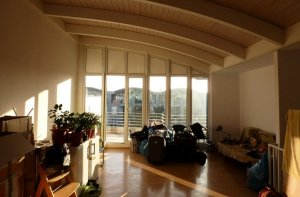
House Walls
 The lawyers and the realtors told us what the owners of redesigned housing should be prepared and what changes would not be possible to legitimize.
The lawyers and the realtors told us what the owners of redesigned housing should be prepared and what changes would not be possible to legitimize.
Photo: User Petr Magera from Flickr.com
The re-planning of apartments has become a habitual phenomenon for Russians at the end of the twentieth century. Model dwellings built in Soviet times often caused dissatisfaction among tenants: someone did not like too much of the " tramway " uniforms, someone did not fit the combined sledge, and others tried to adjust the configuration of the parcel. To date, a third of all existing apartments in Moscow have been redesigned, reported by RBK-Nevigability at the Realtor Housing Agency. This is not only about major alterations, but also about minor internal wall transfers, and has been clarified by the company. This does not mean that all 33 per cent of the apartments have been altered: in some cases, the owners have restored the original configuration.
This is not only about major alterations, but also about minor internal wall transfers, and has been clarified by the company. This does not mean that all 33 per cent of the apartments have been altered: in some cases, the owners have restored the original configuration.
At the present time, Russia has strong laws that regulate the redesign of apartments in multi-stage centres. Violation of laws is subject to serious sanctions, ranging from monetary penalties to the prohibition of leaving the country or the forced sale of housing from auction. To keep your apartment and avoid punishment, it's enough to figure out what's possible, and that you can't change the plan.
Violation of laws is subject to serious sanctions, ranging from monetary penalties to the prohibition of leaving the country or the forced sale of housing from auction. To keep your apartment and avoid punishment, it's enough to figure out what's possible, and that you can't change the plan.
Prohibition
The list of prohibited alterations is rather shy and ambiguous, and in many cases the court makes a decision on the admissibility of an alteration of the apartment. " The non-authorized alterations are: the increase/decrease in the area of the wardrobe at the expense of the adjacent premises, the consolidation of the balcony and the lodge with the apartment/kukhni area, the expansion of the sanusla through the adjacent corridor, and referred to A2 Maria Ponamoreev, Senior Lawyer. - It is also prohibited to transfer central heating batteries to the balcony and to dismantle the ventilation closet. "











